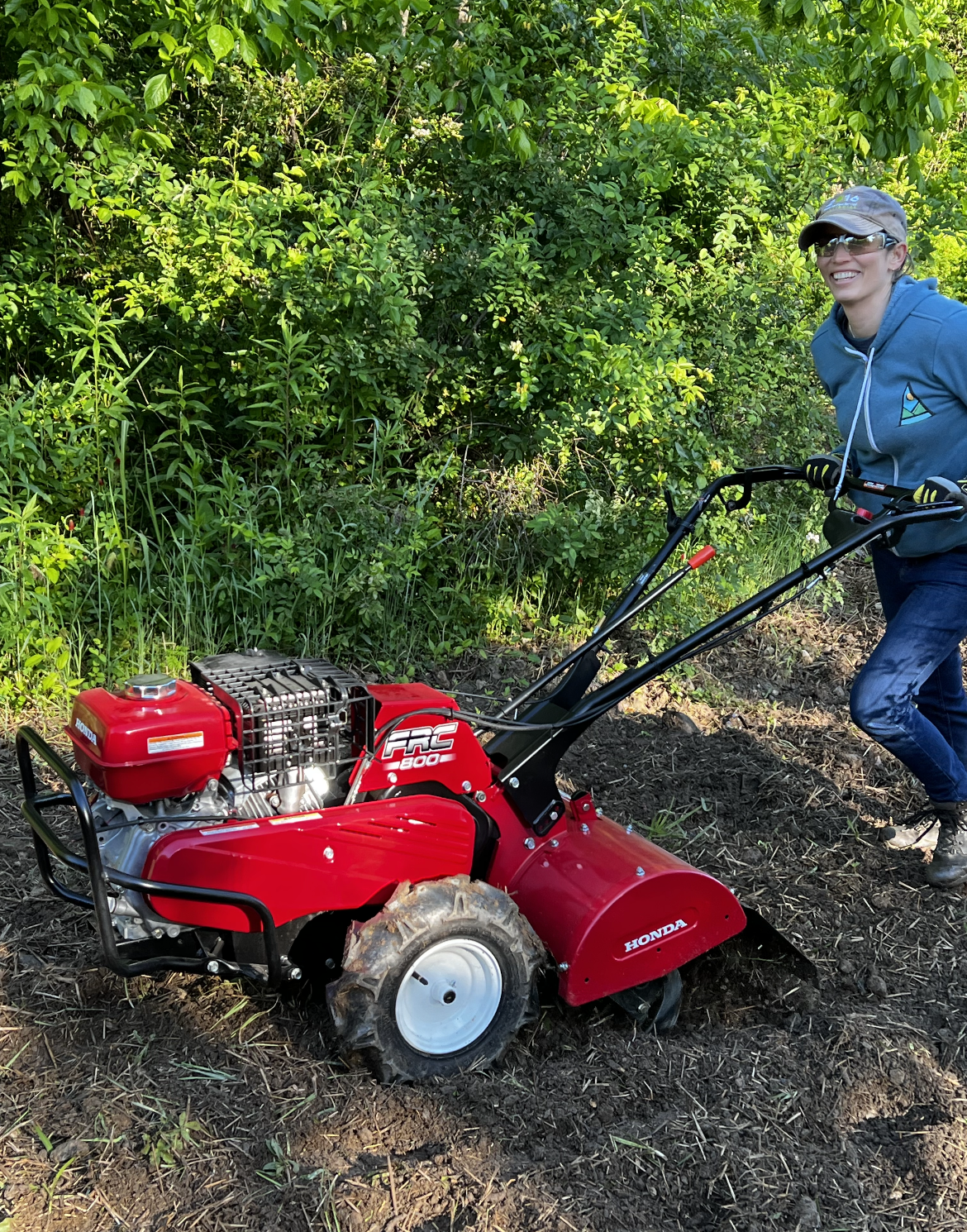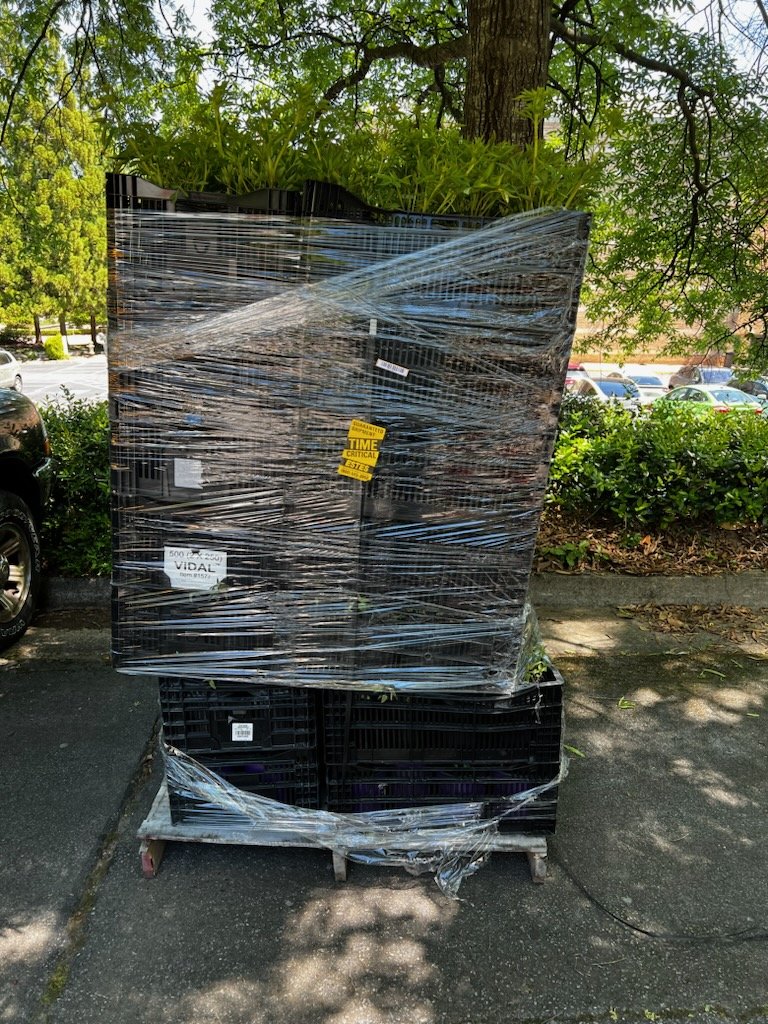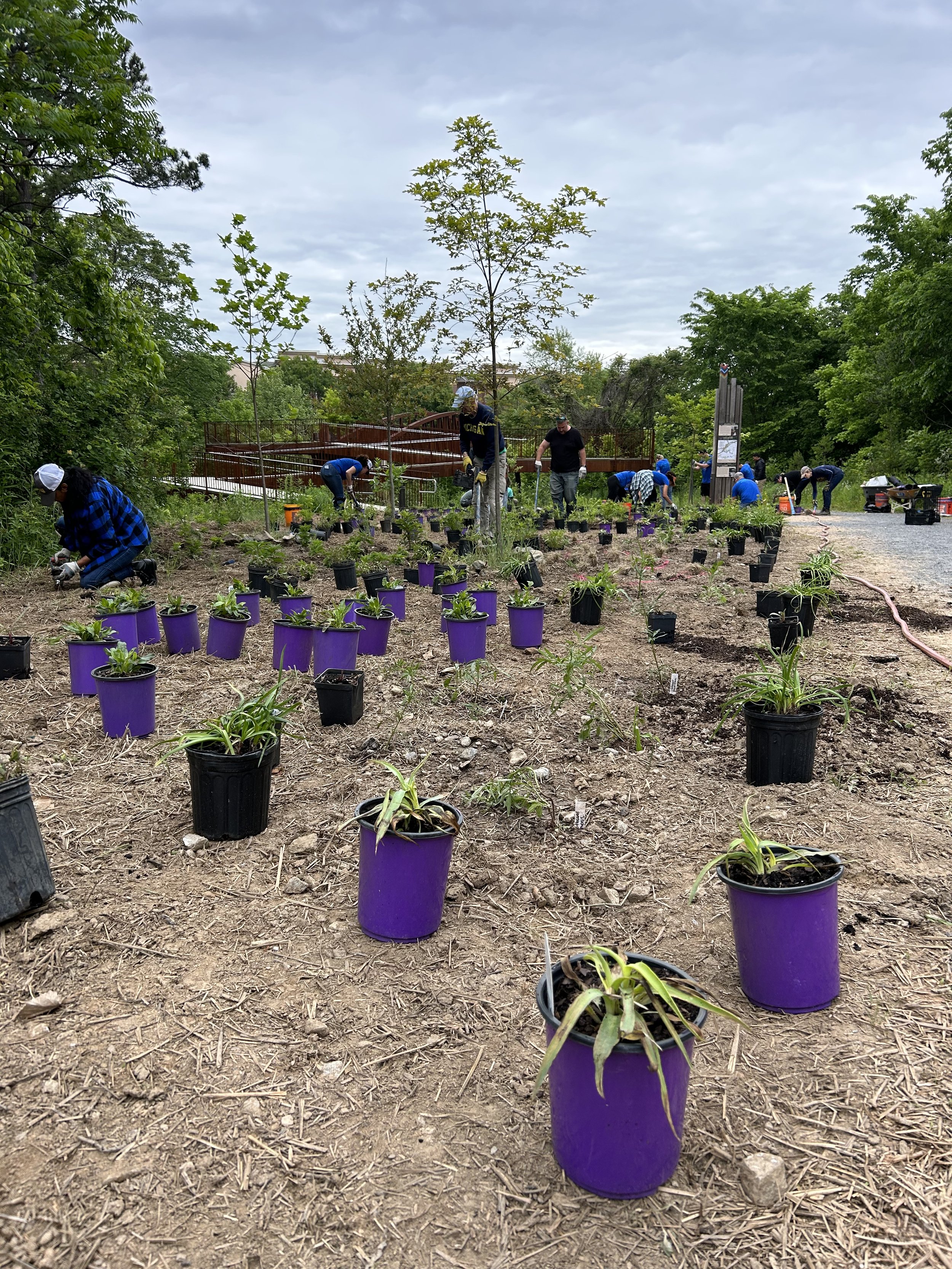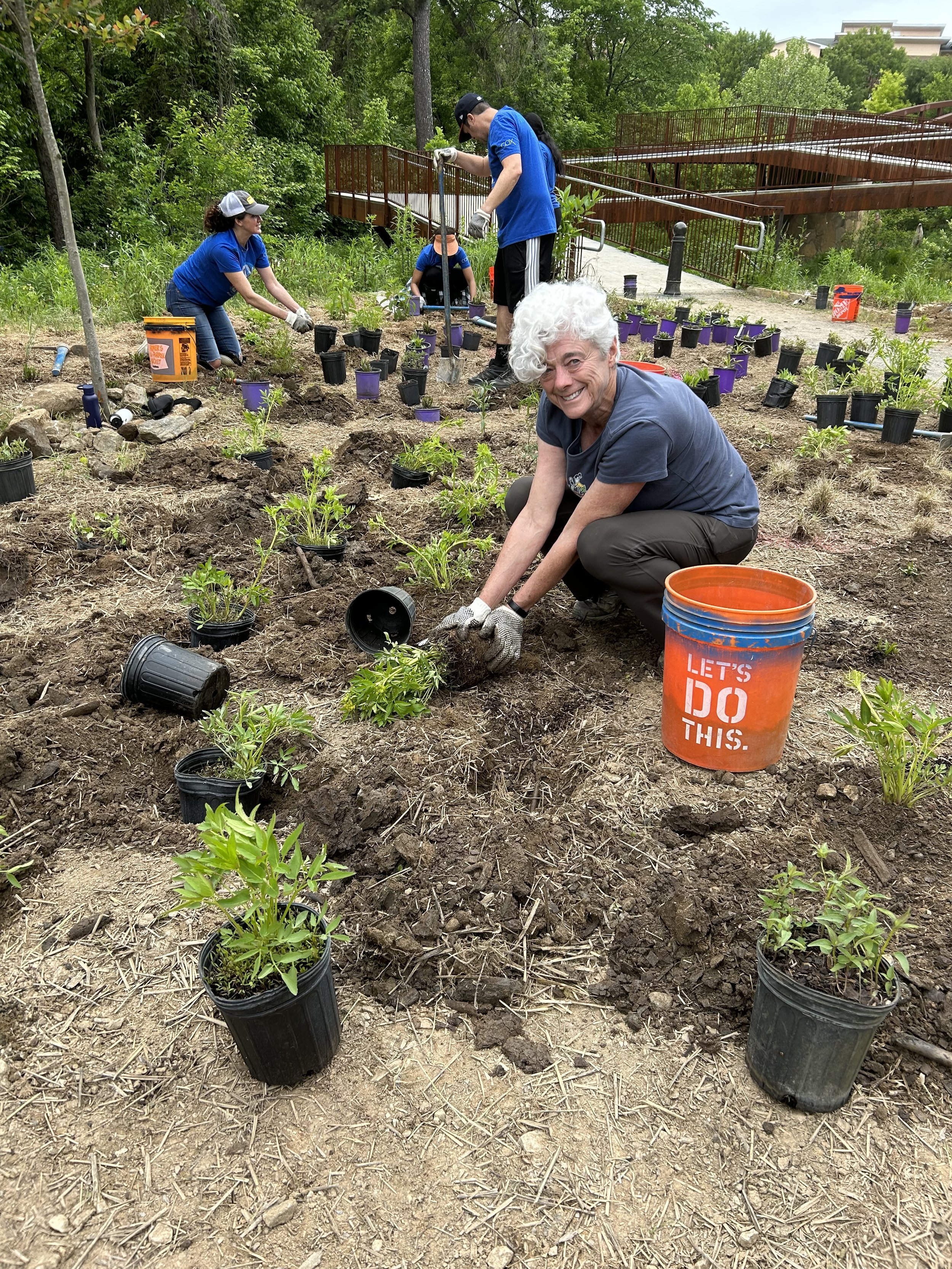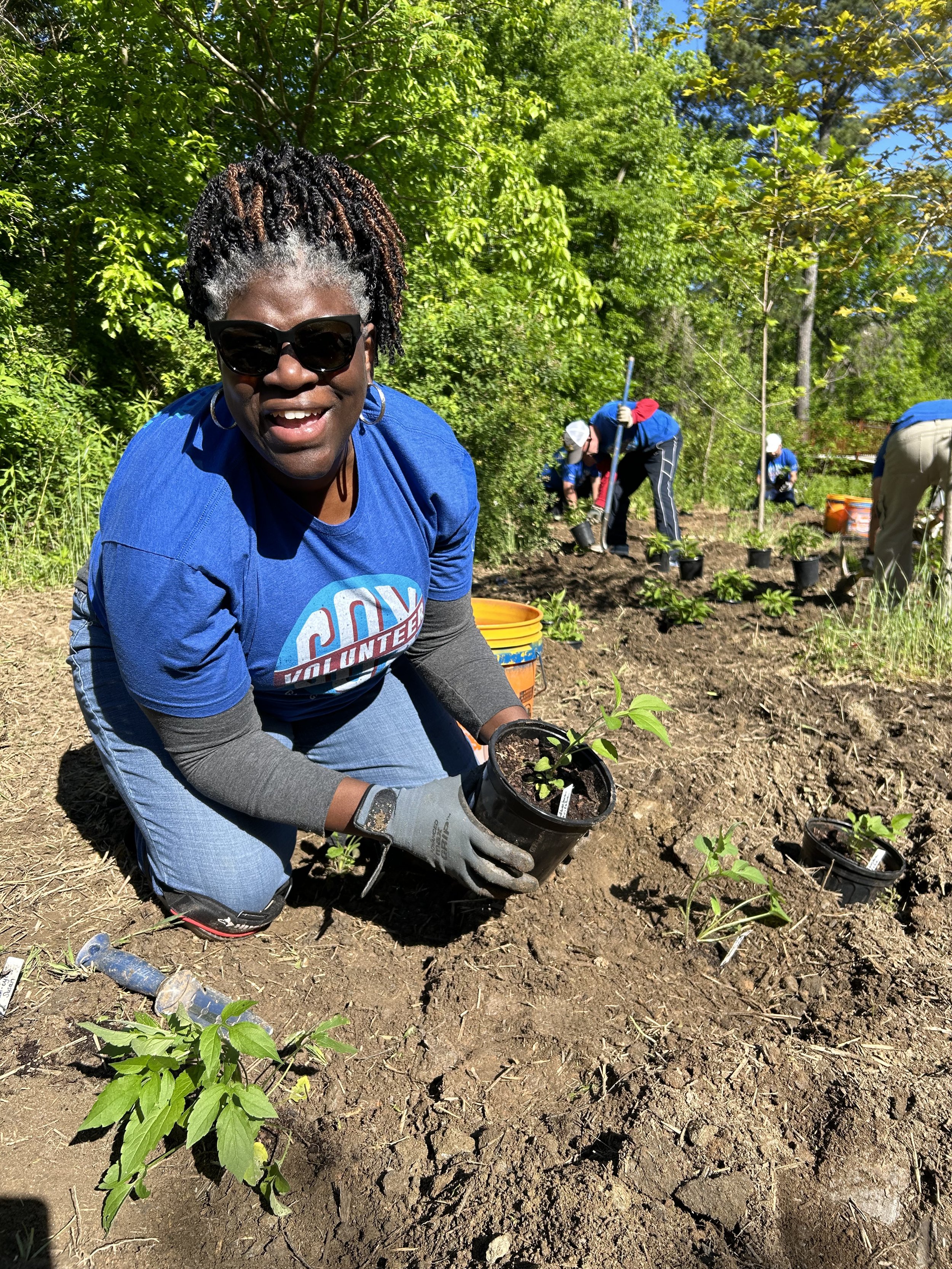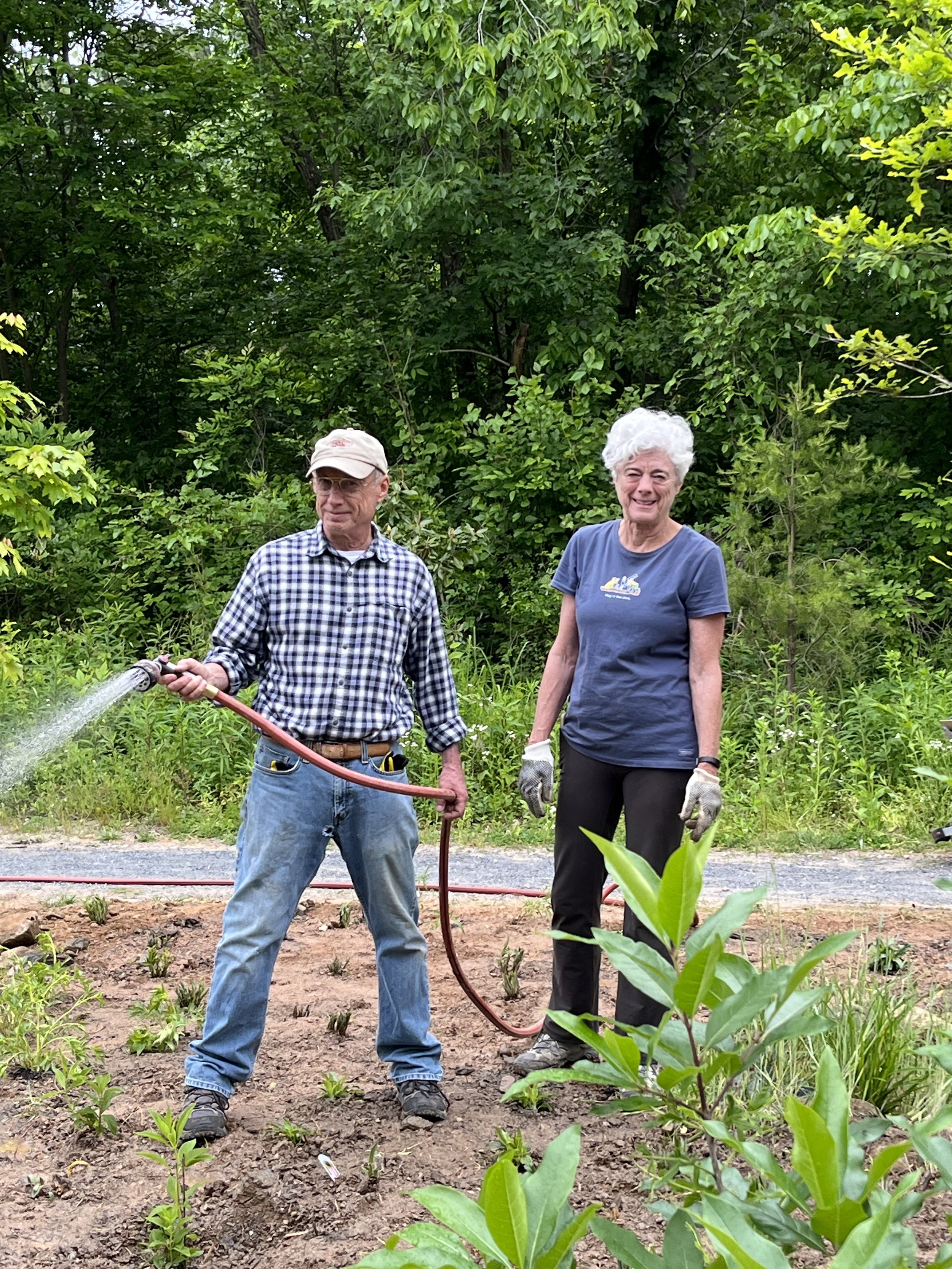By Sally Sears
The truck heading for Atlanta was late. Two pallets stacked and shrink wrapped bore South Fork Conservancy’s future landscape for the Peachtree Creek headwaters near Lindbergh Drive and Piedmont Road.
I thought of the fragile plants inside, $10,000 worth, and cringed.
Three dozen volunteers from Cox Enterprises were waiting to get the plants into the ground at the foot of the Confluence Bridge at Adina Drive.
The Peachtree Garden Club’s donation, matched by Park Pride, was invested in an experiment: using native plants to show landscaping that’s good for birds, bugs, bees, and all of us.
But no. The truck was late. I shuddered to think of all the things that could go wrong with precious dollars, living plants, and volunteers.
In the scramble to reschedule, I rehearsed the lessons we learned from the Atlanta History Center’s gorgeous example along the sidewalk on West Paces Ferry. Find hardscrabble native plants to go in the miserable dirt. Plant them so close together they’ll crowd out most weeds. And make sure they bloom and offer nectar all season long. Our plan included 15 kinds of plants, 1200 in all, in a design created by landscape architect Nicole Day to make the most of the views of the trails and creeks.
But 1200 individual plants? This would be the largest planting ever undertaken by the South Fork Conservancy. Over a thousand purple pots meant a thousand holes chopped out of the ground, through rock and soil compacted by decades of sewer lines and highway construction.
When the Cox volunteers started in with pickaxes and a rototiller, I shook my head. How could we ever get all the babies off the truck and into holes in the ground? The first day we finished only about a third of the job.
But Cox volunteers are flexible, fearless, and up for a challenge. More volunteers showed up on the second day. More pickaxes! More holes! More snacks of doughnut holes! More jokes! “Yes, plant them green side up.” “Yes, remember to take the plants out of the pots.”
Executive Director Kimberly Estep rallied the volunteers and took her turn at wrestling with the rototiller. By the end of the second day, South Fork board member Dave Butler hooked up a pump from the Atlanta ToolBank to water the plants. Board members Mary Leight and Dorothy Sussman packed up empty purple pots to return to a native-plant nursery, and Patrick Dean put guard tape around a trail border.
Now we get to share the new landscape with the whole city. Come and take a good look.
From Trashed to Treasured
We partnered with community and Cox volunteers during Earth Month to host our first creek cleanup of the North Fork. Volunteers dove in to the task and removed over 2,000 pounds of trash in just one day! THANK YOU to everyone who made this extraordinary day possible!
A Spring Workday on Trails Along the South Fork of Peachtree Creek
By Sally Sears
March 25, 2023
Neighborhood volunteer and members of Emory's Sigma Phi Epsilon fraternity
My hand was inches away from yanking invasive English ivy when I spotted a wandering Emory student. He sauntered along Peavine Trail, staring away from the creek and into the woods. He acknowledged neither my wave or hello at first. But two of his classmates, fraternity men, guessed he most likely was listening to something through his ear buds, Sure enough, he was.
The men from Sigma Phi Epsilon were on a mission, helping to clear the trail of messy invasive plants. Unlike me, they knew that walking students often listen to something through ear buds. Yet it turns out that the newcomer was a student on a mission, too. Nick was hunting mushrooms. Morels, he hoped. He’d already found some oyster mushrooms.
We all livened up at that idea. But then Nick shrugged in apology. “I’m from New Jersey,” he admitted. “I don’t know when things get ripe in Atlanta.”
Maybe we could tell him when he might find some chanterelles? Charmed that he didn’t claim to know everything already, I was happy to suggest that August might be a better time for mushroom foraging, and the woods along the tributaries upstream of Emory were good places to start. Olmsted’s parks on Ponce, particularly Deepdene? He’d never heard of these upstream parks and thanked us as he wandered away.
These trail workdays, including spending time with volunteer Emory undergraduates, feature among the pleasures of living near the South Fork of Peachtree Creek. The two men who guessed at Nick’s ear buds were deep into junior year papers and projects.
As they worked, Ace and Will swapped tales of a physics assignment on electrical conductivity in the lab and a paper due on Ursula K. Le Guin’s novel Dispossessed. I listened as Old Briarcliff Road neighbor Terry Krugman found homes along the rocks at the mouth of the Peavine Rain Garden for sharp spears of wild iris. As the new plants take hold, yellow blooms will feed butterflies. The roots and stems will filter pollutants from the tributary coming downhill from Briarcliff Road and Channel 5. More Emory students worked upstream from the rain garden, along the new loop at the Emory Road trailhead.
They tugged out privet, cleared winter-downed branches, and then discovered the buried pieces of a discarded bathroom, half-hidden in the leaves. Someone careless or just lazy long ago tossed the trash down a hill beside Emory Road at Harvard Road. The students shoved half a dozen wheelbarrow loads of bathtub shards and tile chunks up to Emory Road, where Emory’s Exterior Services Director Jimmy Powell saw to their eventual removal.
Volunteers check out the debris that they removed during the cleanup
The morning’s last best moment was discovered sleeping under a chunk of tile on the forest floor. A beautiful salamander, six inches long, and purple as an eggplant stirred in the leaf litter. We knelt quietly as fraternity member Russell rebuilt its hiding place with leaves and twigs.
Look closely to find the salamander


